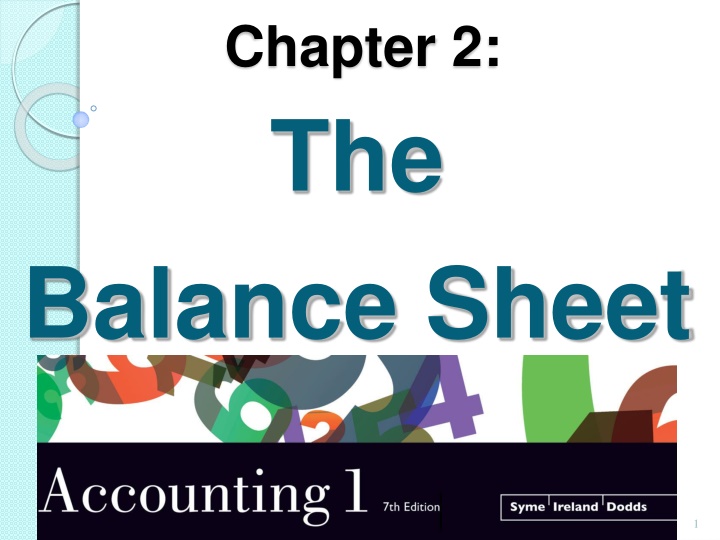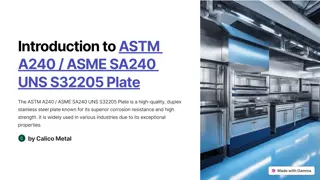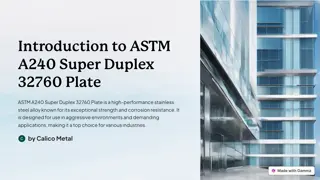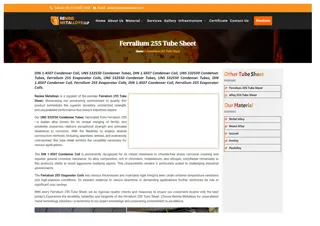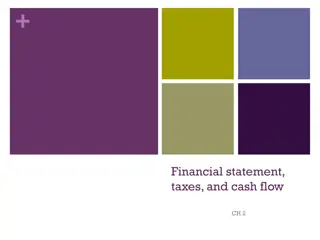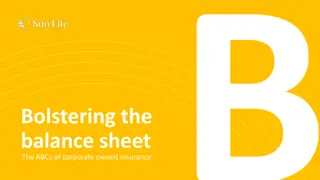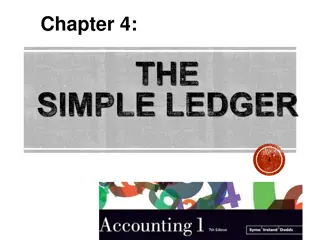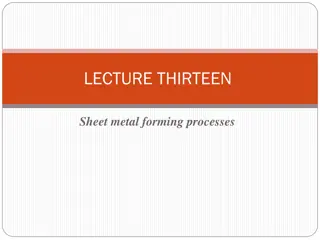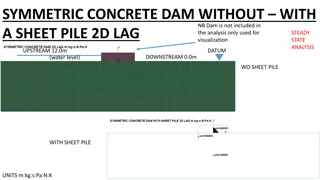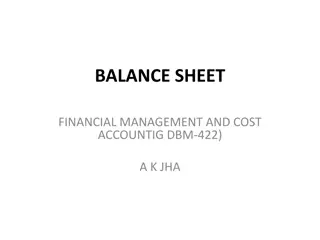Chapter 2: The Balance Sheet Overview
In this chapter, delve into the intricacies of the balance sheet, a crucial financial statement that showcases a company's assets, liabilities, and equity. Gain insights into how to interpret and analyze the balance sheet to assess a company's financial health and stability. Explore key components, such as current assets, long-term investments, and shareholder equity, to make informed financial decisions.
Download Presentation

Please find below an Image/Link to download the presentation.
The content on the website is provided AS IS for your information and personal use only. It may not be sold, licensed, or shared on other websites without obtaining consent from the author.If you encounter any issues during the download, it is possible that the publisher has removed the file from their server.
You are allowed to download the files provided on this website for personal or commercial use, subject to the condition that they are used lawfully. All files are the property of their respective owners.
The content on the website is provided AS IS for your information and personal use only. It may not be sold, licensed, or shared on other websites without obtaining consent from the author.
E N D
Presentation Transcript
Chapter 2: The Balance Sheet 1
The Balance Sheet Financial Position 2
Financial Position One of the most important uses of accounting data is to show the Financial Position of a person, a business or an organization What do you think would go into the determination of Financial Position? 3
Financial Position Things you own These are called ASSETS Things you owe your debts These are called LIABILITIES Calculate the difference between total ASSETS and total LIABILITIES This difference is called CAPITAL or the OWNER S EQUITY or NET WORTH 4
Financial Position Things you own ___________________ $_________ ____________________________ ____________________________ ____________________________ ____________________________ Total Assets$ Things you owe ___________________ $_________ ____________________________ ____________________________ ____________________________ ____________________________ Total Liabilities$ Capital, Equity or Net Worth = Total Assets Total Liabilities = $______________ $______________ = $ 5
Fundamental Accounting Equation It may be stated as A L = OE (Assets Liabilities = Owners Equity) Or the more traditionalway is A = L + OE (Assets = Liabilities + Owner s Equity) 6
Exercises 1.Classify each of the following as an asset or a liability: a) Office furniture b) Land c) Bank loan d) House and lot e) An unpaid heating bill f) An amount loaned to R. Jones g) Mortgage payable h) Automobile i) A Canada Savings Bond 7
Exercises 2. Karen Lipka has assets of $150,000 and liabilities of $65,000. What is her equity? 3. If the total assets of a business are $37,486.49 and the total liabilities are $11,547.80, calculate the owner s equity. 8
The Balance Sheet Features 9
The Balance Sheet $ $ $ $ $ 10
Fundamental Accounting Equation A =L + $ $ OE $ $ $ 11
Assets Liquidity the order in which the assets are converted into cash $ Listed in order of liquidity $ $ $ $ 12
Assets Accounts Receivable List of customers who purchased goods or services but will pay at a later date. $ $ $ $ $ 13
Assets Accounts Receivable List of customers who purchased goods or services but will pay at a later date. They are in debt to the business. $ $ $ $ $ 14
Assets Accounts Receivable List of customers who purchased goods or services but will pay at a later date. They are in debt to the business. Anyone who owes money to the business is a debtor. $ $ $ $ $ 15
Assets Accounts Receivable Abbreviated as A/R. $ $ $ $ $ 16
Assets Accounts Receivable Abbreviated as A/R. Names of customers are listed in alphabetical order by last name. $ $ $ $ $ 17
Assets Accounts Receivable Abbreviated as A/R. Names of customers are listed in alphabetical order by last name. Listed after cash as A/R are usually collected within 30 days $ $ $ $ $ 18
Assets Supplies and long- term assets are listed last as they are not typically converted to cash but are used in the operation of the business. used up . The order shown here is what you will see in the text book. The proper order is to list them in the order they will get $ $ $ $ $ 19
Liabilities Listed in order of when they are normally paid $ $ $ $ $ 20
Liabilities Accounts Payable List of suppliers who the company purchased goods or services from but will pay at a later date. $ $ $ $ $ 21
Liabilities Accounts Payable List of suppliers who the company purchased goods or services from but will pay at a later date. They are amounts owed to creditors. $ $ $ $ $ 22
Liabilities Accounts Payable List of suppliers who the company purchased goods or services from but will pay at a later date. They are amounts owed to creditors. A creditor is anyone to whom the business owes money. $ $ $ $ $ 23
Liabilities Accounts Payable Abbreviated as A/P. $ $ $ $ $ 24
Liabilities Accounts Payable Abbreviated as A/P. Individual creditors are listed alphabetically. $ $ $ $ $ 25
Liabilities Accounts Payable Abbreviated as A/P. Individual creditors are listed alphabetically. Listed first in the list of liabilities as they are typically paid within 30 days. $ $ $ $ $ 26
Owners Equity Listed separately from liabilities. $ $ $ $ $ 27
Owners Equity Listed separately from liabilities. Show the owner s name plus the word Capital . $ $ $ $ $ 28
Owners Equity Listed separately from liabilities. Show the owner s name plus the word Capital . This figure is the difference between total assets & total liabilities. $ $ $ $ $ 29
The Balance Sheet Formatting Conventions 30
Formatting Title who, what, & when. $ $ $ $ $ 31
The Title WHEN The date on which the financial position is determined $ $ $ $ $ 32
Formatting Sub-headings Write and underline sub-headings for Assets, Liabilities, & Owner s Equity. $ $ $ $ $ 33
Formatting Single ruled line before all sub-totals & totals. $ $ $ $ $ 34
Formatting Double ruled line after all totals. $ $ $ Totals on the same line $ $ 35
Formatting Dollar signs ($) are placed with the first amount in every column A dollar sign ($) is also used beneath each single-ruled line $ $ $ $ $ 36
Formatting Use columnar paper to keep figures aligned. Even dollar amounts may be shown as 00 or in the cents column. Notice the columns ... thousands hundreds tens single dollars - cents Notice, decimals and commas are not used. $ $ $ $ $ 37
Exercises 1. Kate Kramer is the owner and operator of The Kramer Company located in Kingston, Ontario. On September 30, --, The Kramer Company had the following assets and liabilities. Cash $ 1,636 J. Crothers (debtor) 1,100 R. Zack (debtor) 370 Supplies 1,200 Furniture & Equipment 14,700 Delivery Equipment 20,100 Bank Loan 10,000 Able Supply Company (creditor) 4,740 C.P. Gregg (creditor) 3,000 a. Prepare the September 30th balance sheet b. If the Kramer Company were a retailing business, it would list an asset named Merchandise Inventory. What do you suppose Merchandise Inventory is? After which asset on the balance sheet would you place Merchandise Inventory? Why? 38 p. 24
The Balance Sheet Claims Against The Assets 39
Claims against the Assets Claims of the Creditors $ $ $ Claims of the Owner $ $ 40
Claims against the Assets Why do creditors and owners have a claim on assets? They have either provided the funds used to acquire the assets or They have provided the assets themselves 41
Claims against the Assets Who has first claim to the assets? If the business is closed down, the claims of the creditors are settled first The owner must accept any losses from the sale of the assets but may also benefit from any profits 42
Exercise Joseph Litz is the owner of Bayliner Boat Charters, a business in Truro, Nova Scotia, that has six sailboats for hire. Mr. Litz has been able to make a comfortable living from renting out these boats during the sailing season. Mr. Litz is past retirement age and is finding the business more than he can comfortably handle. He has attempted to sell it intact, but has been unsuccessful. He has decided to sell the assets for cash and pay off the claims of the creditors. In this way, he can get his equity out of the business. 43
Exercise (continued) Mr. Litz hires a liquidator to help him. Through this person s services, the accounts receivable are collected in full. The supplies are sold for $500; the equipment is sold for $2,000; the boats are sold for $20,350; and the property is sold for $180,000. The liquidator charges $1,500. A. Prepare a detailed calculation showing how much Mr. Litz will receive as a result of his claim against the assets. B. Why would the owner prefer to sell the business itself rather than the assets? 44
The Balance Sheet Accounting Standards 45
IFRS and ASPE AcSB: Accounting Standards Board IFRS: International Financial Reporting Standards Public Companies ASPE: Accounting Standards for Private Enterprises 46
GAAP Generally Accepted Accounting Principles (GAAPs) are a set of rules or standards followed by accountants Some are formal regulations while others set out what has become common practice over the years 47
GAAP Business Entity Concept The business entity concept provides that the accounting for a business organization must be kept separate from the personal affairs of its owner, or from any other business or organization. What does this mean? The owner of the business should not place any personal assets, such as the family home, on the business balance sheet. The balance sheet must reflect the financial position of the business alone. Any personal expenditures of the owner are charged to the owner. 48
GAAP Continuing Concern Concept The continuing concern concept assumes that a business will continue to operate unless it is known that it will not. This is also known as the going concern concept. What does this mean? It is assumed that the business will continue to operate for an indefinite period of time. Consequently, the assets of the company will continue to be used for their intended purpose and would be valued at their original cost. When a company is going out of business the value of assets would usually suffer because they have to be sold under unfavourable circumstances 49
GAAP Principle of Conservatism The principle of conservatism provides that accounting for a business should be fair and reasonable. What does this mean? Accountants are required to make evaluations and estimates, to deliver opinions, and to select procedures. They should do this in such a way that assets or profits are neither overstated nor understated when uncertainty exits. 50
